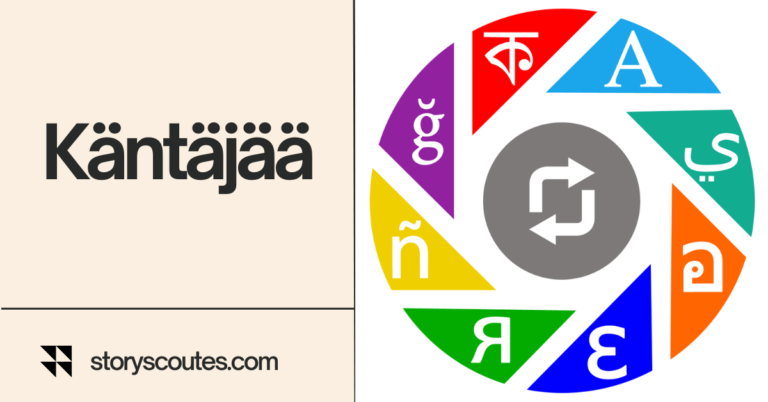Käät Äjä – ranslators at Your Service in 2024
In an increasingly interconnected world, the ability to communicate across languages has become more vital than ever.
Among the unsung heroes facilitating this exchange are translators, often referred to as “käät äjä” in Finnish.
While their importance may go unnoticed by many, their impact on global communication is undeniable.
This article delves into the essential role of translators, exploring their significance, challenges, and the ways they bridge cultural divides.
Understanding the Role of “Käät Äjä”:
“Käät äjä,” or translators, serve as linguistic bridge builders, enabling communication between speakers of different languages.
Their role extends beyond mere word-for-word translation; they must capture the essence, tone, and cultural nuances of the original message.
Also Read: Käntäjää – A Details Guide to Translation in 2024
This nuanced approach ensures that meaning is accurately conveyed, fostering understanding and collaboration across borders.
The Complexity of Translation:
Contrary to popular belief, translation is not a simple task. It involves navigating linguistic intricacies, idiomatic expressions, and cultural subtleties.
Translators must possess a deep understanding of both the source and target languages, as well as the cultural contexts in which they operate.

This complexity underscores the importance of skilled translators in achieving effective communication.
Challenges Faced by Translators:
Translators encounter numerous challenges in their line of work. One such challenge is maintaining accuracy while preserving the intended meaning of the original text.
Additionally, tight deadlines, technical subject matter, and dialectal variations can further complicate the translation process.
Despite these hurdles, skilled translators adeptly navigate these obstacles to deliver high-quality translations.
The Impact of Technology:
Advancements in technology have revolutionized the field of translation, offering tools and software that aid translators in their work.
Machine translation, such as Google Translate, has made basic translations more accessible.
Also Read: Käntäj – know the Revolutionary Translation Tool in 2024
However, it cannot fully replace the nuanced understanding and cultural sensitivity provided by human translators.
Instead, technology serves as a complement to human expertise, streamlining certain aspects of the translation process.
Cultural Sensitivity and Adaptability:
One of the hallmarks of a skilled translator is their cultural sensitivity and adaptability.
Beyond linguistic proficiency, translators must possess an understanding of the cultural nuances embedded within language.
This awareness allows them to accurately convey not only the words but also the underlying cultural context, ensuring that the message resonates with its intended audience.
The Importance of Translators in Global Business:
In the realm of global business, translators play a pivotal role in facilitating international trade and communication.
From marketing materials to legal documents, accurate translation is essential for reaching diverse markets and navigating cross-cultural negotiations.

Businesses that invest in skilled translators gain a competitive edge by effectively engaging with global audiences and fostering meaningful connections.
Conclusion:
“Käät äjä,” or translators, are the unsung heroes of global communication, bridging linguistic and cultural divides with skill and precision.
Their role extends far beyond mere translation, encompassing cultural sensitivity, adaptability, and a deep understanding of language.
Also Read: DigitalNewsAlerts – Staying Ahead in the Information Age In 2024
As the world becomes increasingly interconnected, the importance of skilled translators cannot be overstated.
By recognizing and valuing their contributions, we can foster greater understanding and cooperation across borders.
FAQs about the Käät Äjä
What does “Käät Äjä” mean?
“Käät Äjä” is a Finnish term for “translator,” highlighting the crucial role translators play in bridging language gaps.
What skills are essential for a Käät Äjä?
A Käät Äjä needs proficiency in both the source and target languages, cultural sensitivity, adaptability, and excellent communication skills.
How do Käät Äjäs ensure accuracy in translation?
Käät Äjäs maintain accuracy by understanding the context of the original text, researching terminology, and seeking clarification when needed.
What challenges do Käät Äjäs face in their work?
Käät Äjäs encounter challenges such as linguistic nuances, tight deadlines, technical subject matter, and dialectal variations.
How has technology impacted the role of Käät Äjäs?
Technology has enhanced efficiency with tools like machine translation, but human translators remain essential for nuanced understanding and cultural sensitivity.
What industries rely heavily on Käät Äjäs?
Industries such as global business, healthcare, legal, and media heavily depend on Käät Äjäs for accurate communication across language barriers.
How can individuals become proficient Käät Äjäs?
To become proficient Käät Äjäs, individuals should pursue language studies, gain cultural understanding, seek practical experience, and continually hone their skills through ongoing learning.






